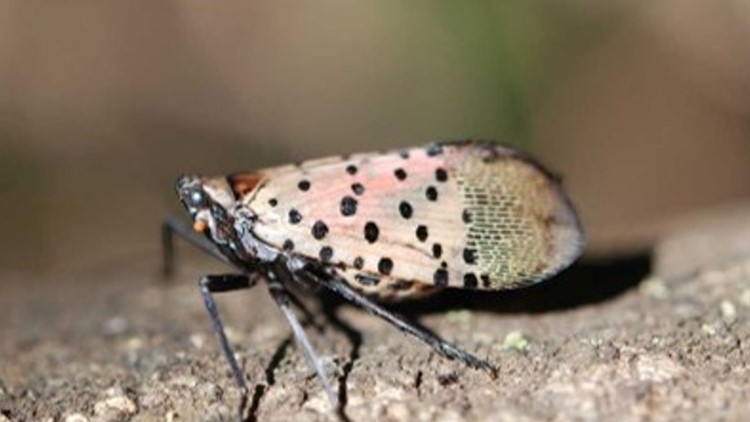OMAK, Wash. — The Washington State Department of Agriculture (WSDA) is asking the public to keep their eyes peeled for a new, potentially destructive pest that was possibly seen in central northern Washington.
In a Thursday bulletin, WSDA said the spotted lanternfly was possibly seen in the area of Omak. The species is native to Asia and attacks mostly grapes, but it has been spotted attacking other crops like apples, hops, peaches and other fruit.
If the species became established in Washington, it could threaten many of the state’s crops and result in expensive quarantines and an increase in pesticide usage, according to the WSDA. Scientists estimate the insect could cost the state’s agricultural industry more than $3 billion annually.
The sighting, which was reported last week, included a picture and mentioned seeing five live lanternflies.
WSDA entomologists responded to the area for a search, but they were unable to confirm the report was actually a spotted lanternfly.
“Our search revealed abundant host material in the area,” Sven Spichiger, WSDA managing entomologist, said. “For the next several weeks, we ask people to look for both adults and egg masses. If they think they found any suspected life stage of the pest, they should report it.”
The lanternfly prefers nesting in another invasive species, the tree-of-heaven, which state agencies asked Washington residents to be on the lookout for all October.
Because it is too late in the year for WSDA to survey the Omak area for the pest, the public is asked to report any sightings. WSDA will begin surveying the area next year.
When reporting a sighting, include a photograph, date, location and a specimen, if possible, through the Washington Invasive Species Council, by emailing WSDA at pestprogram@agr.wa.gov or by calling 1-800-443-6684.



